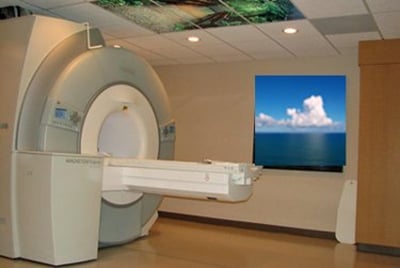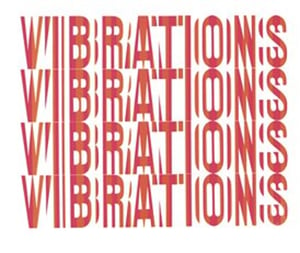There are so many things to consider before you buy an MRI. Which one will fit the needs of your client base? Will you get the referrals you need? Will insurance payment standards make it worthwhile? Do you have the right facility to house a new MRI?  Do you have to build one? And should you buy a new or refurbished MRI?
Do you have to build one? And should you buy a new or refurbished MRI?
Well, here’s another question you can add to the list. What are today’s guidelines if you have to have an emergency shutdown or “quench” of your MRI magnet? The reality is, the guidelines have changed over the years, so it’s a good idea to review them for your existing MRI and certainly as you plan for a new facility for one.
Let’s start with the basics about a quench. MRI systems use cryogens (usually helium) to cool the magnet in the MR scanner. This cooling can drastically reduce the amount of power that’s required to control the MR scanner. With temperatures hundreds of degrees below freezing, cryogens are cold enough to freeze human tissue within seconds, and pose serious cold burn and frostbite hazards. As cryogens are released to keep the magnet cool, they evaporate into odorless, colorless and tasteless gases. Most of the gas is recaptured, but some escapes during the process. These gases are still extremely cold and are normally vented safely out of the building.
There are specific cryogen requirements of the MRI, as well for the room build-out needed to insure that the scanner is kept cool and working both properly and safely.
The greatest risk of exposure to cryogens is during an emergency shut down of the magnet, called a system quench. During a quench, the cryogen gases evaporate quickly, causing a loss of superconductivity in the magnet. Emergency venting systems direct the escaping cryogens through a quench pipe out of the building. If there is a problem with the emergency venting system, or the cryogen tank malfunctions, the liquid helium could be released into the MR scanner room. In that case, the rapidly expanding helium will cause displacement of oxygen and present an asphyxiation hazard. In addition, the force of quenching can be strong enough to destroy MR equipment or the walls of the scanner room.
Unintentional quenches are extremely rare and usually don’t cause incidents. However, a quench can be triggered by:
- MRI magnet malfunction or damage to the magnet
- Extreme vibration
- Impurities in the cryogens
- Major shim disturbances
- Thermal bridging
- Manual activation
It’s important to note that once a quench has begun, it can’t be stopped.
What happens during a quench?
As the magnet loses its superconducting capacity, the cryogens immediately begin to boil and expand inside the cryostat. The expanding cryogens increase the pressure and temperature until, in a matter of seconds, the pressure-relief valve gives way. The expanding cryogens erupt from the cryostat into the quench pipe, continuing their dramatic expansion as they barrel through the pipe to the discharge point.
Should there be a failure of that pipe at any point in that path of travel, cryogens will burst through into the building. If there is a significant obstruction, the pressure will keep building until it ruptures the pipe or breaks a joint, potentially dumping hundreds of thousands of liters of gaseous helium into the room.
Fortunately, quenches are very infrequent. However, this infrequency has bred complacency, and as a result, many facilities don’t give their cryogen vent a second thought after it is installed.
When three MRI systems were intentionally quenched during Hurricane Katrina in 2005, one of the three quenched magnets ruptured the quench pipe. The pressure buildup in the magnet room exploded the control room window, demonstrating the force of expanding cryogens. While this limited example is not common, it’s important to make sure your installation has been done correctly.
Double-checking current quench pipe specifications
As mentioned earlier, quench pipe specifications have changed over the years, so it’s wise to compare your current quench pipe specifications to the most current design criteria to see if an upgrade is recommended or required.
In many MRI installations, a key portion of the cryogen vent is readily visible in the magnet room. For many systems, you can actually see the cryogen vent as it leaves the magnet and goes up through the ceiling. If you pop out a few ceiling tiles (being careful of the RF shield ceiling above the architectural ceiling) you can probably see much more, so it’s easier to verify pipe sizes and specifications against the original blueprints.
Different vendors have different means of tying the quench pipe installed in the building to the pressure valve on the MRI. Some prefer flexible piping, others prefer bolted connections of solid pipe and others use a carbon fiber material clamped to two not-quite-touching lengths of rigid pipe.
One of the largest risk factors in cryogen vent design in the magnet room is excessive use of flexible piping. Many MRIs are connected to their cryogen vent with a length of flexible piping, but the cryogen vent system should be exclusively made from rigid pipe. The only possible exception is the short jump from the magnet to the pipe. This short section of flexible pipe, which often looks like dryer hose, should connect pipe sections that are vertically aligned and be almost straight up and down. It should not have any slack or excess material, and should not have any significant bends or curves in it. Excess length or curves in flexible piping can increase the chances of the pipe pinching or folding in a quench, making a rupture that much more likely.
Any clamps used in the installation should be checked for tightness and the material should be checked for physical or thermal fatigue. If this material fails, a quench would pressurize the room with gaseous helium.
It’s also important to check out the discharge point. All roof-discharging quench pipes should stand up off of the roof surface in order to keep debris from being knocked into them. Usually a 36-inch minimum is required. You should also make sure it’s high enough so drifting snow can’t block the discharge.
The bottom line
If you have an existing MRI, it’s a good idea to make sure your installation meets current requirements. If you are planning to build a new MRI facility, renovating space or expanding into a new area, it’s a great idea to work with a qualified architect, engineer and specialists in imaging facility design and construction. You should also discuss OEM requirements (whether new or refurbished) with your MRI system provider and RF and magnetic shielding experts.
Remember, at Atlantis Worldwide, we are happy to guide you through this process. Please contact Norm Tessell, FACHE at 212-366-9100 x 120 or email norm@atlantisworldwide.com
Some MRI Blogs you might have missed:
- Before You Order That MRI: A Checklist
- Top 4 Considerations Before Installing an MRI
- How Does an MRI Work?
- MRI's - Top 5 Things to Consider Before Buying a MRI




